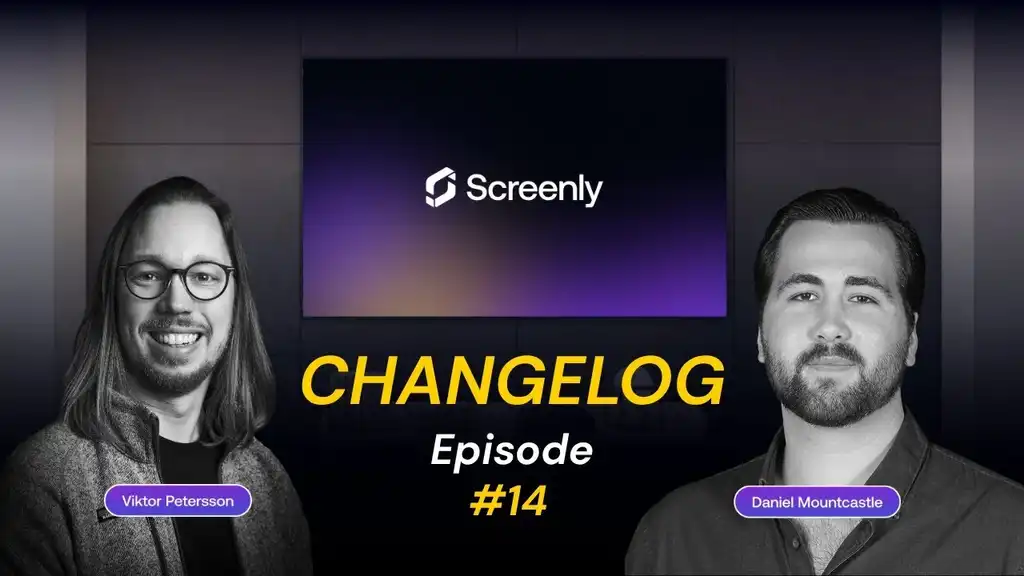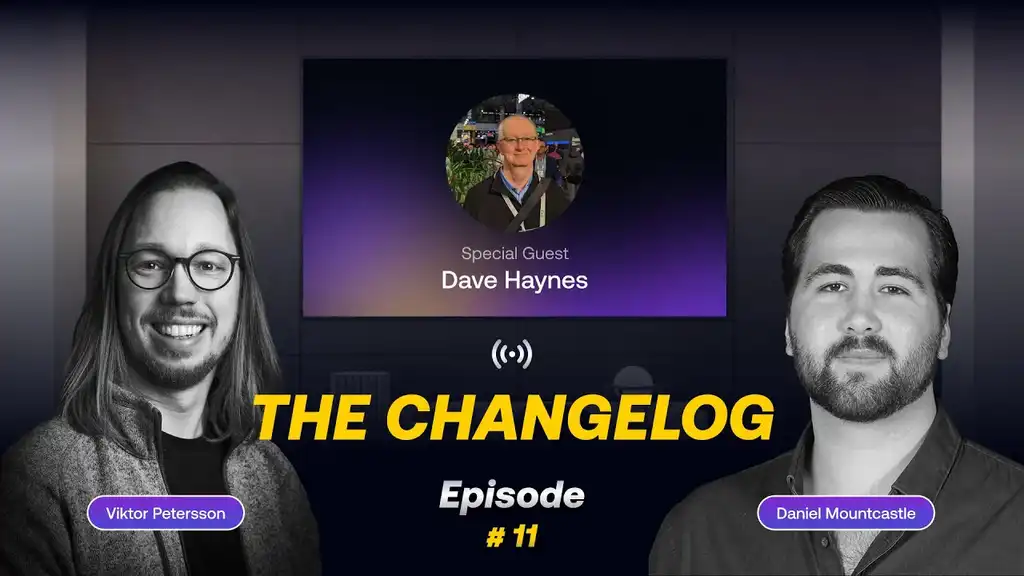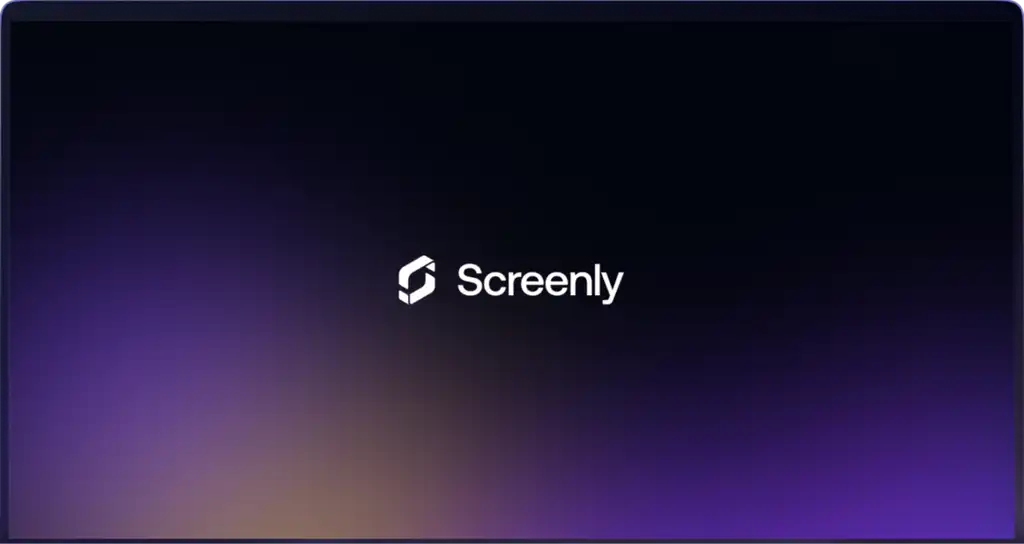Listen to this episode on:
Screenly Changelog Episode 13: Florian Rotberg from invidis, managed signage, security blind spots, the EU’s CRA, and AI’s impact
Welcome back to the Screenly Changelog! In Episode 13, Viktor and Daniel are joined by a very special guest, Florian Rotberg, the founder and Managing Director of invidis consulting. As one of the foremost authorities on the global digital signage market, Florian brings a 30,000-foot view to the industry’s most pressing topics. Catch the full conversation by watching the episode above or read the highlights below.
Joined by a true digital signage industry expert
Florian Rotberg is the Managing Director of invidis, the Munich-based digital signage consulting firm he founded 19 years ago. We’re honored to have Florian on this week’s episode!
The expertise of Florian and invidis is crystallized in the company’s annual invidis Yearbook, a comprehensive 200+ page report often called the “bible of the digital signage industry.” The yearbook provides market analysis, trends, and rankings of top companies.
The inevitable shift to managed digital signage services
A major theme of the discussion is the industry’s transition to a managed service provider (MSP) model. Florian explains that as digital signage has become business-critical, the old approach of simply installing hardware and leaving the end-user responsible is no longer viable.
The modern mindset is a shift from ownership to access. Companies no longer need to own and manage the hardware. Instead, they need access to a reliable, secure, and always-on service. This moves the responsibility for lifecycle management, including critical software updates and maintenance, from the customer to the MSP, who has the expertise and tools to do it effectively. This now frames signage correctly as an IoT endpoint within the broader IT ecosystem, not just an isolated AV silo.
Winning in the MSP landscape
So, who is set to win in this new landscape? In Episode 13, the panel covers that success requires three things: the right skills, the right tools, and financial strength. They predict that many smaller, traditional AV integrators may not survive the transition because they lack the scale, 24/7 network operations centers (NOCs), and security that enterprise clients now demand.
It’s a scale game, and it’s far easier for a large IT services company to add digital signage to its portfolio than for a small AV company to build an entire MSP practice from scratch.
The security blind spot & the Power BI wake-up call
The conversation also touches on topics in digital signage security. Viktor and Florian discuss the dangerous “security blind spot” in the industry: many compliance frameworks, like SOC 2, don’t properly audit the digital signage player This means a vendor can be certified while shipping players with dangerously outdated software.
Florian pointed to the widespread issue of displays running Chromium browser versions that are many years old. This vulnerability was thrown into full display when a Microsoft Power BI update required a more modern browser, suddenly rendering the popular tool incompatible with a huge portion of installed digital signage hardware. This was a “shock moment” for the industry, exposing a long-neglected part of the security chain.
A new era of accountability & the EU’s Cyber Resilience Act (CRA)
Addressing this and similar market failures in digital signage security is the upcoming EU Cyber Resilience Act (CRA). Viktor described it as a necessary, if painful, intervention that will force vendors to take software supply chain security seriously.
A key component of the CRA for digital signage is the mandate for a software bill of materials (SBOM), essentially a detailed ingredient list for software. This eliminates “plausible deniability” for vendors, forcing them to be transparent about the components they use and the vulnerabilities they contain. While this will be a major challenge for companies with legacy tech stacks, it’s a vital step toward maturing the industry’s security posture. The cost of compliance will need to be absorbed by the industry as the new cost of doing business in Europe.
The current state of AI in digital signage
It wouldn’t be a 2025 discussion without mentioning AI. Florian cut through the hype to focus on where AI is delivering real value today. One key area is in smart device management, where AI is being used to monitor hardware, proactively detect potential failures, and provide recommendations for maintenance. This is a complex task that favors larger players with the resources to invest in AI talent.
Another key area is data-driven content. In corporate campus digital signage, for example, AI can pull data from various backend systems (like room booking software or CO2 sensors) to display highly relevant, automated content without human intervention.
While the future may lie in agentic AI that deeply integrates into customer journeys, these practical applications are already making a tangible impact.
Learn more and get started with Screenly
We want to extend a huge thank you to Florian Rotberg for sharing his insights and being part of Episode 13! To keep up with his work, you can visit invidis.com or find him on LinkedIn.
Interested in secure, scalable digital signage solutions? Explore Screenly and start your 14-day free trial today.
Stay tuned for future updates, and thank you for joining us for the Screenly Changelog Episode 13!




